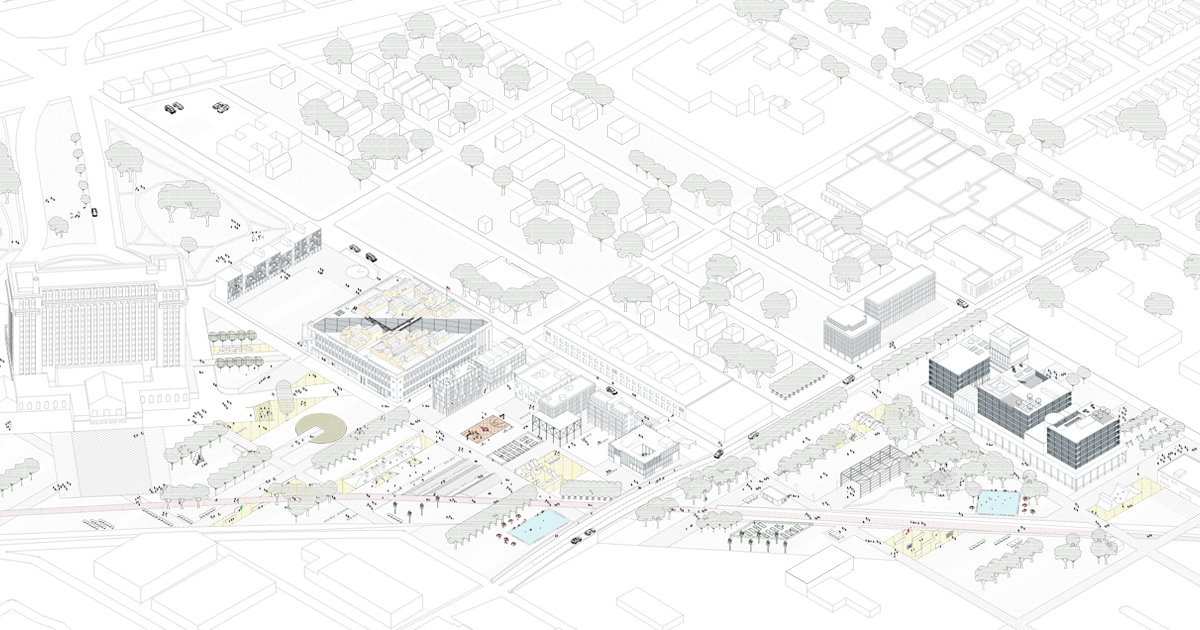
The project identifies the industrial area as a limit between two part of the same neighborhood. The discontinuity of the morphology and the absence of a particular functional program create an hole in the continuity of the city.
The urban project born from the idea to experiment the mixed city model, able to create, entertain and be the home of the people who live this place. In this system the productive space assumes a key role therefore, is now a consolidated trend in the United States bring the small productivity inside the city. This phenomenon, able to redevelop the post-industrial cities from both the economic and social point of view, requires a consideration on the relation that the productive space takes in respect of the city.
The two buildings considered turn into work spaces, able to assume a strong contact with the public space, densifying and grouping the work spaces. They are very diverse, one is the old post office, designed by Albert Kahn, and one is a cold storage building. The approaches to the projects cannot be more different, one is conservative to maintain the legacy, and one is innovative to improve the relationship with the context.
The Vertical Urban Factory then becomes a motor for the renewal of the post-industrial areas of cities like Detroit, creating a new paradigm for the design of the productive space and its relationship with the context; the guiding principles for this new system are: density, diversity and porosity.
The work is part of a wider research activity on the productive city that I am conducting. These Final Diploma projects are case studies supported by the Erasmus Plus program. Can production reshape the city? Can urban manufacturing become an active part of the urban transformation in a mixed-use scenario capable to reactivate a live-work and play configuration? Detroit, the icon of the post-industrial city is the ideal field of experimentation. The two design hypothesis, in Corktown historic district, present the transformation of two different buildings and of the urban space between them. One is an interesting Albert Kahn building with a monolithic squared shape, the other is a cold storage and an ordinary warehouse with an important structural skeleton. Two different approaches are chosen to design the new functions. More conservative for the Kahn's building, saving most of the original design, and innovative for the warehouse with a new skin on the old structural skeleton (reminding the project for the silo in Copenhagen by COBE). Urban design of the site is completing the work with suggestions for new work and live typologies infilling the vacant urban tissue and adaptive reuses for surviving structures. Nowadays reuse and recycling are two of the main topic of architecture and urban design research and practice: the work presented is trying to contribute to the international debate.